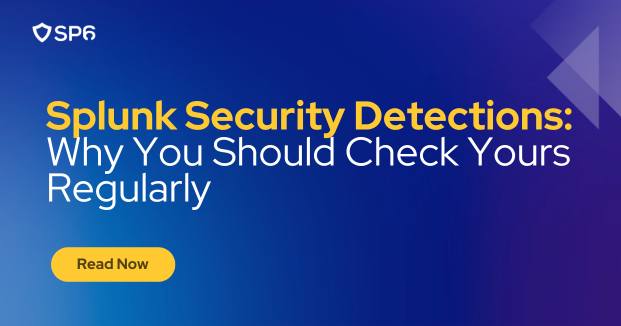Investing in cutting-edge security tools is an essential step toward building a strong cybersecurity posture. Tools like Splunk, for example, are equipped with powerful detection, monitoring, and analytics capabilities. However, even the most sophisticated systems require consistent testing and validation to ensure they operate as intended and remain effective.
In this blog, we’ll take a look at what is at risk if one doesn’t do this, the benefits of frequent testing, and how we in Splunk Professional Services can help your organization achieve your desired goals.
Challenges and Solutions: Why Advanced Systems Can Underperform Without Regular Testing
1. Dynamic Threat Landscape
Advanced systems are configured based on existing threat intelligence and detection rules. However, attackers are constantly evolving their tactics, techniques, and procedures (TTPs).
- Challenge: A detection system set up to catch yesterday’s threats may fail to recognize newer, more sophisticated methods, like fileless malware or supply chain attacks.
- Solution: Regular testing helps validate whether your system is effective against the latest threats, ensuring it remains current and relevant.
2. Configuration Drift
Over time, changes in infrastructure, new integrations, or even updates to the security platform can cause misconfigurations or rules to lose their effectiveness.
- Challenge: A detection rule that worked perfectly six months ago might now generate false positives or miss critical signals due to configuration drift.
- Solution: Testing identifies these issues early, allowing teams to recalibrate detection rules and maintain optimal performance.
3. Detection of Blind Spots
Even advanced systems can have blind spots—areas of your environment or types of attacks they fail to monitor effectively. These blind spots may be caused by:
- Gaps in log sources or missing data feeds.
- Overly narrow detection rules that miss broader attack patterns.
- Ignoring low-priority alerts that may signal the early stages of an attack.
Solution: Testing uncovers these gaps, enabling you to expand coverage and strengthen your defense.
4. Human and Process Dependencies
Security systems rely on human operators and well-defined processes to work effectively. Even the most advanced systems are prone to failure when:
- Analysts are overwhelmed with alert fatigue, leading to missed critical signals.
- Detection rules are created with incorrect assumptions or poorly defined use cases.
- Processes for responding to detected threats are outdated or unclear.
Solution: Regular validation ensures that both the system and the supporting human workflows are functioning as intended.
5. Complexity of the Environment
Advanced systems like Splunk operate in diverse and complex environments, integrating with multiple data sources, applications, and cloud services.
- Challenge: The complexity of these environments can lead to missed configurations, duplicate alerts, or integration issues that hinder detection efficiency.
- Solution: Testing allows you to simulate real-world scenarios and ensure all components of the system interact seamlessly.
6. Overreliance on Automation
While automation is a strength of advanced systems, overreliance without validation can create risks:
- Automated rules might inadvertently block legitimate activity.
- False positives from automation can desensitize analysts to real threats.
Solution: Regular testing provides a feedback loop, ensuring automation is fine-tuned and aligned with actual risks.
Testing and Validation: The Key to Unlocking Full Potential
Think of your advanced detection system as a high-performance vehicle. While it’s built to deliver exceptional results, it won’t perform as expected if the engine isn’t tuned, the tires aren’t checked, or the fuel isn’t replenished. Similarly, security systems must be tested, validated, and maintained to operate at peak efficiency. So, by adopting a regular testing approach, you ensure that:
- Your detection capabilities are aligned with current and emerging threats.
- Your system’s configuration remains optimized for your unique environment.
- Your team is prepared to respond quickly and effectively to the identified risks.
Advanced systems can provide significant value—but only when they’re actively managed and regularly validated. Let us help you ensure your investment in security delivers the protection your organization needs.
How SP6 Can Help
As an Elite Splunk Professional Services provider, we’re here to bridge the gap between detection potential and performance. Here’s how we can assist:
1. Security Use Case Development Workshop
We collaborate with your team to develop a roadmap of prioritized use cases tailored to your industry and unique risks. Using frameworks like MITRE ATT&CK, we map your detections to the tactics and techniques most relevant to your business.
2. Risk-Based Alerting (RBA) Implementation
RBA prioritizes alerts based on risk, ensuring your security team focuses on the most critical threats. This approach reduces noise, improves efficiency, and makes your SOC more agile.
3. Comprehensive Testing Workshops
Through interactive workshops, we test your existing detections against simulated real-world threats. These exercises identify gaps, optimize rules, and refine alerting strategies.
4. Continuous Improvement
Testing isn’t a one-time task—it’s an ongoing process. We provide ongoing support to help you adapt to new threats, update detection rules, and validate performance regularly.
Conclusion: Staying Ahead of Threats
In cybersecurity, complacency is the greatest risk. Regular testing of your security detections ensures you’re not just keeping pace but staying ahead of attackers. Whether you’re looking to validate your existing capabilities, adopt a proactive risk-based approach, or enhance compliance, we have the expertise to help.
Ready to make your security detections a competitive advantage? Let’s talk.
